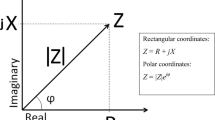Abstract.
The increasing use of tellurium compounds in organic synthesis, industrial applications, and as a possible component in pesticides means that its introduction into the environment will increase in the future. Therefore, knowledge of the relative toxicity and mode of toxic action of tellurium-containing compounds is important. The studies detailed here used three model compounds: diphenyl ditelluride, 3,3′-diaminodiphenyl ditelluride, and 4,4′-diisopropyldiphenyl ditelluride. Experiments with human promyelocytic (line HL-60) cells indicate that all of the organotellurium compounds induce an apoptotic form of cell death. The induction of apoptosis occurs in a time- and dose-dependent manner as assayed by three different analytical methods: fluorescence microscopy, gel electrophoresis, and flow cytometry. Apoptotic cells were evident as early as 2 h following treatment with 1×10–6 M concentrations of the compounds. Based on these results, future care should be afforded these compounds in laboratory as well as industrial settings.
Similar content being viewed by others
Author information
Authors and Affiliations
Additional information
Electronic Publication
Rights and permissions
About this article
Cite this article
Sailer, B.L., Liles, N., Dickerson, S. et al. Cytometric determination of novel organotellurium compound toxicity in a promyelocytic (HL-60) cell line. Arch Toxicol 77, 30–36 (2003). https://doi.org/10.1007/s00204-002-0407-x
Received:
Accepted:
Issue Date:
DOI: https://doi.org/10.1007/s00204-002-0407-x




